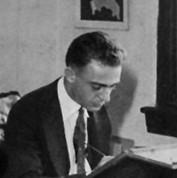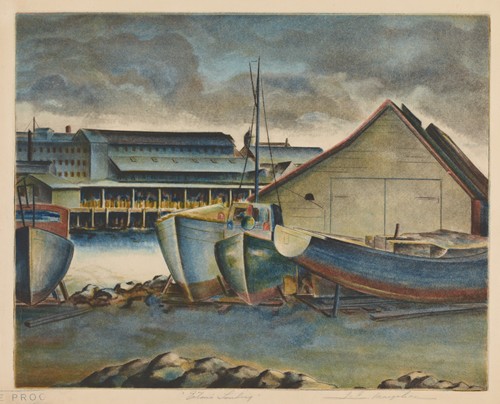

Samuel L. Margolies
Samuel L. Margolies was a master of intaglio printmaking who specialized in quiet, unpeopled landscapes and images of New York City's skyscrapers seen from dizzying heights. A native of Brooklyn, Margolies studied in New York at the Cooper Union Art School and the venerable National Academy of Design, and privately with illustrator, painter, and printmaker Victor Semon Perard (1870–1957). He also attended the Beaux-Arts Institute of Design, a New York academy that attracted numerous immigrant and first-generation Americans aspiring to work in construction design trades. He began exhibiting his paintings there around 1927 and soon established a reputation for images of urban architecture and rural scenes in both oils and watercolors.
During the Great Depression of the 1930s, when many artists made prints in an effort to reach a wider audience through low-priced multiple artworks, Margolies turned seriously to etching. Working in a range of intaglio techniques, he became a master of the tonal medium of aquatint. His lonely images of the countryside and views of Manhattan's vast canyons from the daring viewpoint of high-rise construction workers captured the populist mood of the era. Margolies exhibited in numerous venues, mostly in New York, and reached a broad public through Associated American Artists and the Miniature Print Club.
In 1935 Margolies joined the Federal Art Project of the WPA and served as an instructor in its Art Teaching Division. He was active in a number of artists' organizations, including the Society of American Etchers and the Queensboro Society of Allied Arts and Crafts in his native Brooklyn. His etchings were displayed in the New York World's Fair in 1939.
Margolies is remembered today as one of a host of talented depression-era American artists whose representational prints record the realities of contemporary life.
